#King George II of Greece
Text

Rare photo of King Constantine I of Greece with his children and brother (?) (from left to right) Prince Christopher of Greece and Denmark (?), Prince George, Princess Helen, Prince Alexander of Greece and Denmark, early 1900s
Source: Princess Victoria of Wales’s private albums
#I’m not sure if the boy on the right is Christopher….#looks about right though…#king Constantine i#greek royal family#king george ii of greece#king alexander of greece#princess helen of greece and denmark#princess helen of greece#Helen queen mother of Romania#crown princess Helen of Romania#prince Christopher of Greece and Denmark
13 notes
·
View notes
Text
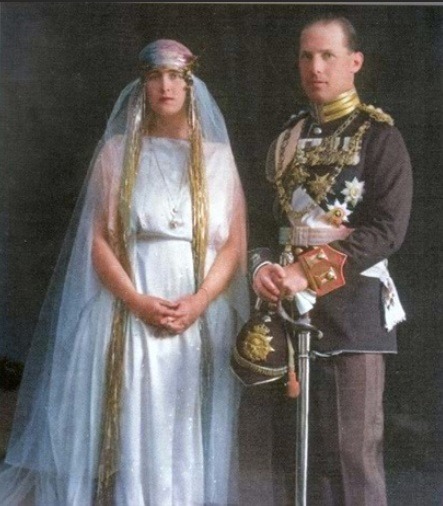
2 notes
·
View notes
Text

Tsarevich Nicholas (later Tsar Nicholas II), Grand Duchesses Xenia and Olga Alexandrovna and Grand Duke Michael Alexandrovich with cousins, including Prince George (later King George V of United Kingdom).
#tsar nicholas ii#king george v#grand duke michael#xenia alexandrovna#olga alexandrovna#greece#england#denmark#tsar#young nicky#grand duke#grand duchess#1894 and early
30 notes
·
View notes
Text
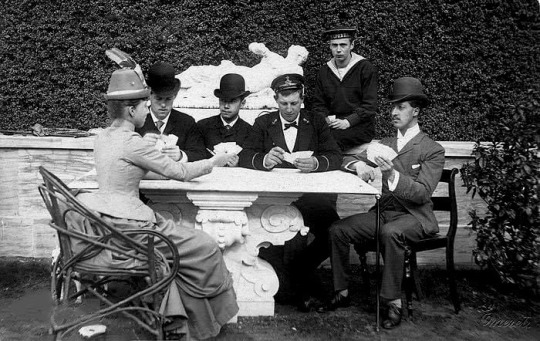
Cousins playing cards, late 1880's
Princess Alexandra of Greece and Denmark, Crown Prince Constantine of Greece and Denmark, Tsesarevich Nicholas, Prince George of Greece and Denmark, Grand Duke George Alexandrovich, Prince Albert Victor of Wales.
#alexandra georgievna#king constantine i#tsesarevich nicholas#George of Greece and Denmark#george alexandrovich#prince albert victor#1880s#danish royal family#nicholas ii#grand duke george#albert victor#alexandra of greece
47 notes
·
View notes
Text
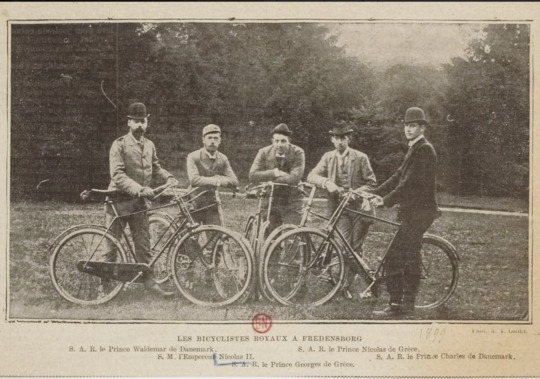
THE BICYCLE WAS ALL THE RAGE, SO THE ROYALS HAD TO GET INTO CYCLING
On the photo above, from left to right: Prince Valdemar of Denmark, Emperor Nicholas II, “Greek Georgie” (Prince George of Greece), “Greek Nicky” (Prince Nicholas of Greece) and Prince Christopher of Denmark. These guys really dressed up to go riding…neck tie, hat…
On the photo below, from left to right, Grand Duke Mikhail Alexandrovich…the jock of the group as usual, notice the handle of his bike; Cousin Victoria of Wales with an incredibly small waist, Queen Maud and her handsome and intelligent husband Hakoon VII.

#russian history#imperial russia#nicholas ii#vintage photography#prince nicholas of greece and denmark#prince george of greece#Grand Duke Mikhail Alexandrovich#Princess Victoria of Wales#Queen Maud of Norway#King Haakon VII of Norway#prince Charles of denmark
17 notes
·
View notes
Photo
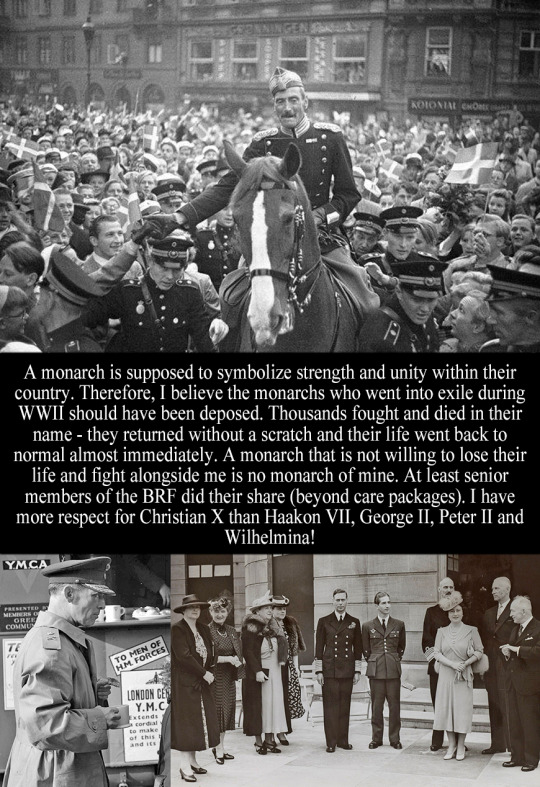
“A monarch is supposed to symbolize strength and unity within their country. Therefore, I believe the monarchs who went into exile during WWII should have been deposed. Thousands fought and died in their name - they returned without a scratch and their life went back to normal almost immediately. A monarch that is not willing to lose their life and fight alongside me is no monarch of mine. At least senior members of the BRF did their share (beyond care packages). I have more respect for Christian X than Haakon VII, George II, Peter II and Wilhelmina!” - Submitted by Anonymous
#King Christian X#Haakon VII#Peter II of Yugoslavia#queen wilhelmina#George II of Greece#british royal family#monarchy
20 notes
·
View notes
Text
A Royal Life by HRH Duke of Kent & Hugo Vickers #HouseofWindsor #BookReview #Audiobook
I finally got around to listening to the #Dukeofkent's memoir recently. A cousin to the late #QueenElizabethII, he has also led a life of service. Famed royal historian #HugoVickers helped put together this book. #houseofwindsor #ARoyalLife #bookreview
HRH The Duke of Kent has been at the heart of the British Royal Family throughout his life. As a working member of the Royal Family, he has supported his cousin, The Queen, representing her at home and abroad. His royal duties began when, in 1952, at the age of sixteen, he walked in the procession behind King George VI’s coffin, later paying homage to The Queen at her Coronation in 1953. Since…

View On WordPress
#A Royal Life#Duchess of Kent#Duke of Edinburgh#Duke of Kent#House of Windsor#Hugo Vickers#King George V#King George VI#Prince George#Prince Philip#Princess Marina#Princess Marina of Greece and Denmark#Queen Elizabeth II#Queen Mary
3 notes
·
View notes
Text
Some of the surviving clothes and personal belongings of Lord Byron (1788 - 1824)


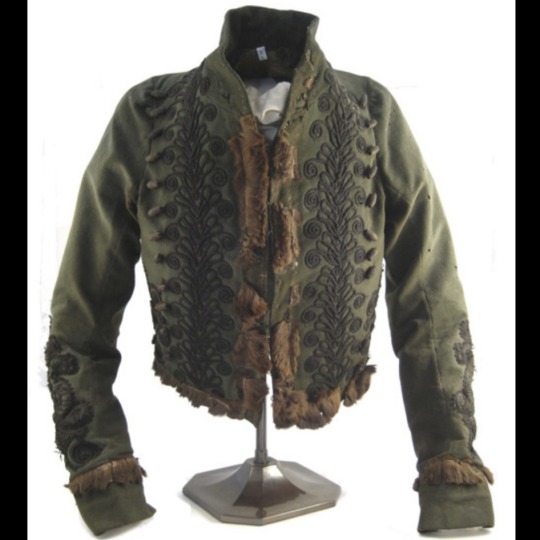
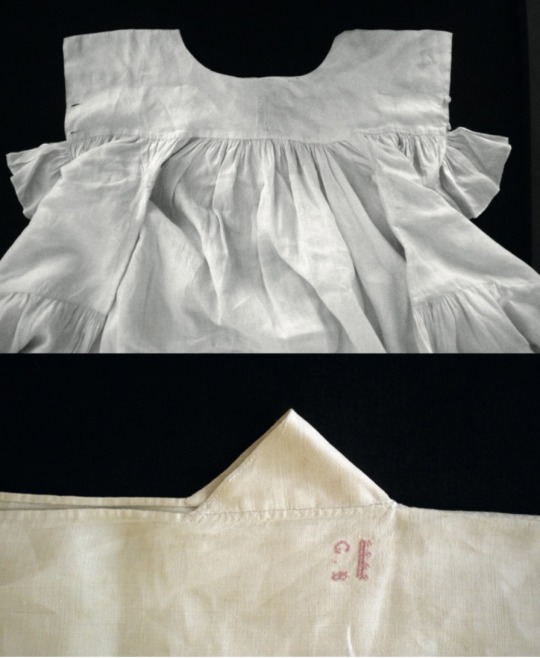
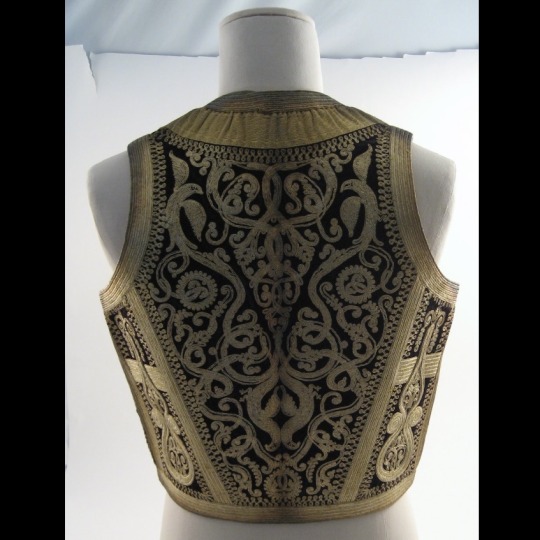

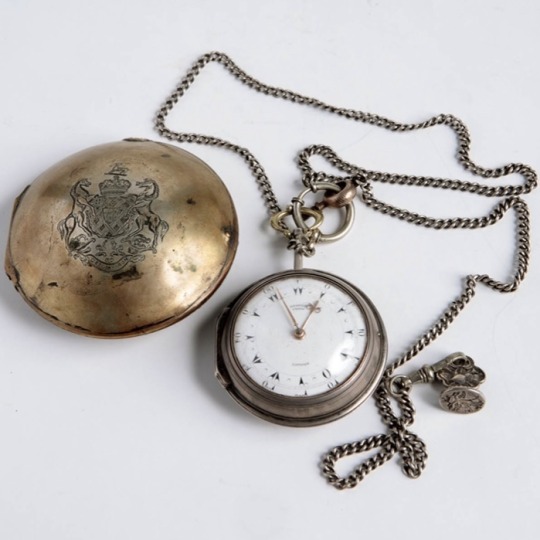
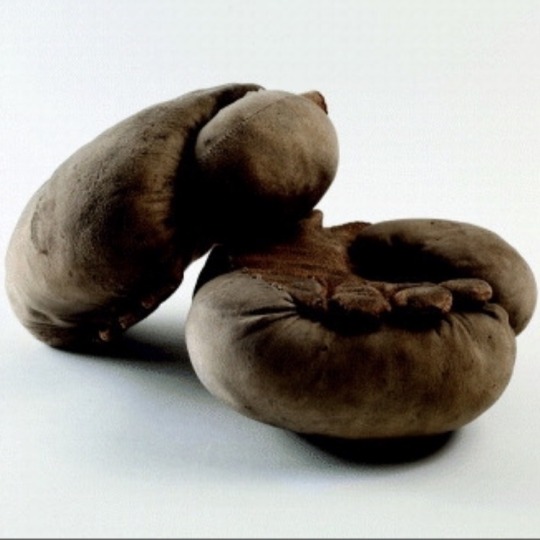
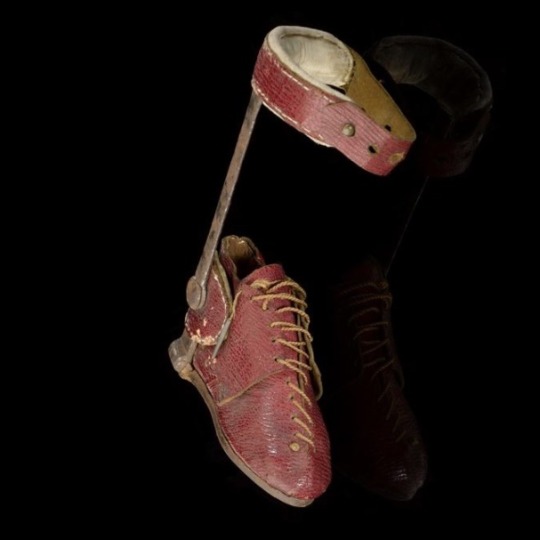
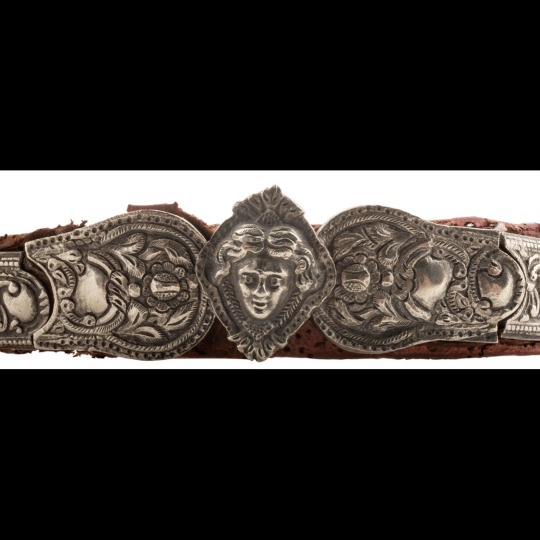
1) a favorite white waistcoat originally belonging to King George II (1683 - 1760) bearing their shared initials; Byron wore this on his wedding day
2) a red embroidered jacket from Albania
3) a green fur-lined jacket given to him by Edward Trelawny
4) a linen undershirt of his which Lady Byron kept after their separation
5) a gold embroidered vest from Albania
6) a ring, thought to be his engagement ring
7) a pocket-watch bearing the Byron family crest
8) pair of boxing gloves; pugilism was big in 1800s london & like many male aristocrats at the time, Byron took lessons at the academy of famous boxing champion John Jackson
9) a small infant’s orthopedic boot; one of the many unsuccessful attempts to treat the congenital deformity of his leg & lifelong limp
10) a 32in/83cm belt with the head of Nike/Victory worn in his last months in Greece during the Revolution; a popular symbol during the war.
#lord byron#history#fashion#historical fashion#regency era#regency era fashion#byron#british history#artefacts#museum artefacts#artifacts#relics#english history#literary history#old#19th century#imperial era#georgian era#1800s#alabanian#byronism#romantic era#romanticism
315 notes
·
View notes
Text
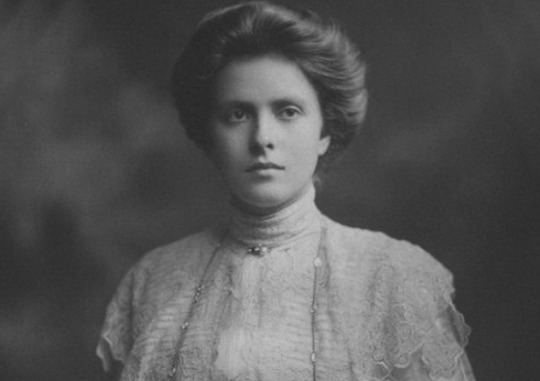
THURSDAY HERO: Princess Alice
Amazing story! Princess Alice was an unconventional royal who prioritized helping others over wealth and privilege. She devoted her life to good deeds and spiritual growth, and was notable among European royalty for taking Jews into her home during the Holocaust.
Princess Alice stood out for another reason: she was deaf from birth.
Born in 1885 at Windsor Castle, Alice was the great-granddaughter of Queen Victoria. She learned to lip read at a young age, and could speak several languages. Alice was widely regarded as the most beautiful princess in Europe.
At age 17, Alice fell in love with dashing Prince Andrew of Greece and they were married in 1903. Alice and Andrew had four daughters and a son. Their son Philip would later be married to Queen Elizabeth II. Alice communicated with her children mainly in sign language.
Political turmoil in Greece forced the royal family into exile. They settled in a sleepy suburb of Paris, where Alice threw herself into charitable work helping Greek refugees. Her husband left her for a life of gambling and debauchery in Monte Carlo.
Relying on the charity of wealthy relatives, Alice found strength in her Greek Orthodox faith. She became increasingly religious, and believed that she was receiving divine messages and had healing powers. She yearned to share her faith and mystical experiences with others, but instead was dismissed as mentally unhinged.
Alice had a nervous breakdown in 1930. She was committed against her will to a mental institution in Switzerland, with a dubious diagnosis of schizophrenia. Alice did not even get a chance to say goodbye to her children. Her youngest, 9 year old Philip, returned from a picnic to find his mother gone.
Alice tried desperately to leave the asylum, but was kept prisoner in Switzerland for 2 1/2 years. During that time, her beloved son Philip was sent to live with relatives, and her four daughters married German princes. Alice was not allowed to attend any of their weddings.
Finally, in 1932, Alice was released. She became a wanderer, traveling through Europe by herself, staying with relatives or at bed & breakfast inns. In 1935, Alice returned to Greece, where she lived alone in a modest two bedroom apartment and worked with the poor.
The Germans occupied Athens in April 1941. Alice devoted herself to relieving the tremendous suffering in her country. She worked for the Red Cross, organizing soup kitchens and creating shelters for orphaned children. Alice also started a nursing service to provide health care to the poorest Athenians.
In 1943, the Germans started deporting the Jews of Athens to concentration camps. Alice hid a Jewish widow, Rachel Cohen, and her children in her own apartment for over a year. Rachel’s late husband, Haimaki Cohen, was an advisor to King George I of Greece, and Alice considered it her solemn duty to save the remaining Cohen family.
Alice lived yards from Gestapo headquarters. When the Germans became suspicious of her and started asking questions, she used her deafness as an excuse not to answer them. Alice kept the Cohen family safe until Greece was liberated in 1944.
After the war, Alice founded her own religious order, the Christian Sisterhood of Martha and Mary, and became a nun. She built a convent and orphanage in a poverty-stricken part of Athens. Alice dressed in a nun’s habit consisting of a drab gray robe, white wimple, cord and rosary beads – but still enjoyed smoking and playing cards.
In 1967, after a Greek military coup, Alice finally returned to Great Britain. She lived at Buckingham Palace with her son Philip and daughter-in-law, Queen Elizabeth II.
Alice died in 1969. She owned no possessions, having given everything to the poor. Before she died, Alice expressed a desire to be buried at the Convent of Saint Mary Magdalene on the Mount of Olives in Jerusalem, but instead was laid to rest in the Royal Crypt in Windsor Castle.
In 1988, almost 20 years after she died, Alice’s dying wish was finally granted. Her remains were sent to Jerusalem, where she was buried on the Mount of Olives.
In 1994, Alice was honored by the Holocaust Memorial in Jerusalem (Yad Vashem) as Righteous Among The Nations. Her son Prince Philip said of his mother’s wartime heroism, “I suspect that it never occurred to her that her action was in any way special. She was a person with a deep religious faith, and she would have considered it to be a perfectly natural human reaction to fellow beings in distress.”
Video
146 notes
·
View notes
Text


British Royal Family - The Queen attend the Thanksgiving Service for King Constantine of the Hellenes at St George's Chapel in Windsor, England. Constantine II, Head of the Royal House of Greece, reigned as the last King of the Hellenes from 6 March 1964 to 1 June 1973, and died in Athens at the age of 82. (Photo by Chris Jackson) | February 27, 2024
#royaltyedit#theroyalsandi#queen camilla#queen camilla of the united kingdom#british royal family#my edit
92 notes
·
View notes
Text

Kings and Their Lovers
Male Kings and Their Homoromantic or Erotic Relationships from Antiquity to Modern Times
History offers numerous examples of male rulers who had homoromantic or erotic relationships with other men. These connections were often complex and influenced by cultural, societal, and personal factors. Here are some remarkable examples:
Antiquity
Alexander the Great (356–323 BC)
The Macedonian king and famous conqueror had a particularly close relationship with Hephaestion, his childhood friend and confidant. Plutarch described Hephaestion as "Alexander's lover." After Hephaestion's death, Alexander was inconsolable and ordered a nationwide mourning. The Persian eunuch Bagoas is also mentioned in ancient sources as Alexander's lover.
Emperor Hadrian (76–138 AD)
The Roman emperor is known for his passionate relationship with the young Greek Antinous. When Antinous drowned in the Nile, Hadrian was devastated. He had his lover deified, founded the city of Antinoopolis, and erected statues of Antinous throughout the empire. These actions testify to Hadrian's deep affection and grief.
Middle Ages
Richard the Lionheart (1157–1199)
Richard I of England had a close relationship with Philip II of France. Contemporary chroniclers described how the two kings "ate from the same table and drank from the same cup every night" and "slept in the same bed." Although the exact nature of their relationship remains disputed, such reports suggest a very intimate connection.
Edward II of England (1284–1327)
Edward II had an intense relationship with Piers Gaveston, which chroniclers of the time described as excessively intimate. Later, he developed a similarly close relationship with Hugh Despenser the Younger. These connections led to political tensions and ultimately contributed to Edward's deposition.
Modern Times
James I of England (1566–1625)
James, also known as James VI of Scotland, had several close relationships with men. Particularly notable was his connection with George Villiers, the Duke of Buckingham. In letters, James called Villiers "my sweet child and wife" and "my dear Venus boy." This correspondence indicates a passionate and intimate relationship.
Louis XIV of France (1638–1715)
Although the Sun King is primarily known for his female mistresses, there are indications of intimate relationships with men. The Duke of Saint-Simon reported in his memoirs of several homosexual affairs at court, including one between Louis and his brother Philippe, Duke of Orléans.
Frederick the Great of Prussia (1712–1786)
Frederick had close relationships with several men, particularly Hans Hermann von Katte in his youth. Although Frederick married, the marriage remained childless and distant. Instead, he surrounded himself with a circle of close male friends and confidants.
Ludwig II of Bavaria (1845–1886)
Known as the "Fairy Tale King," Ludwig II had close and presumably romantic relationships with several men. Particularly well-known are his connections to Richard Hornig, his stable master, and Paul von Thurn und Taxis. Ludwig's homosexuality was an open secret during his lifetime and contributed to the accusations that led to his dethronement.
Modern Era
Tsar Nicholas II of Russia (1868–1918)
Although later married, the last Russian Tsar had a close relationship as a young man with his cousin, Prince Nicholas of Greece. In letters, he described their "special friendship" and the "wonderful nights" they spent together.
These examples show that same-sex relationships among rulers were not uncommon. The nature and perception of such connections varied greatly depending on the cultural and historical context. While some relationships were lived relatively openly, others remained hidden due to societal norms and political implications or were only hinted at in documentation.
It is important to note that modern concepts of sexual orientation and identity cannot be directly applied to historical figures. Many of these rulers would not have identified themselves as homosexual or bisexual, as these terms did not exist in their time. Their relationships must be understood in the context of their respective culture and time.
Nevertheless, these historical examples offer important insights into the diversity of human relationships and show that same-sex love and affection existed even at the highest levels of power.
Text supported by GPT-4o, Claude AI
Image generated with SD1.5. Overworked with inpainting (SD1.5/SDXL) and composing.
#History#LGBTQHistory#AlexanderTheGreat#Hephaestion#Hadrian#Antinous#RichardTheLionheart#EdwardII#JamesI#LouisXIV#FrederickTheGreat#LudwigII#NicholasII#QueerHistory#SameSexRelationships#Monarchs#RoyalLovers#HistoricalFigures#HumanRelationships
23 notes
·
View notes
Text
✨ 15 days of Princess Anne ✨
August is Princess Anne’s birth month and her 73rd birthday is on the 15th so until then we will look at her fascinating life, one photo for every year!
The fifties
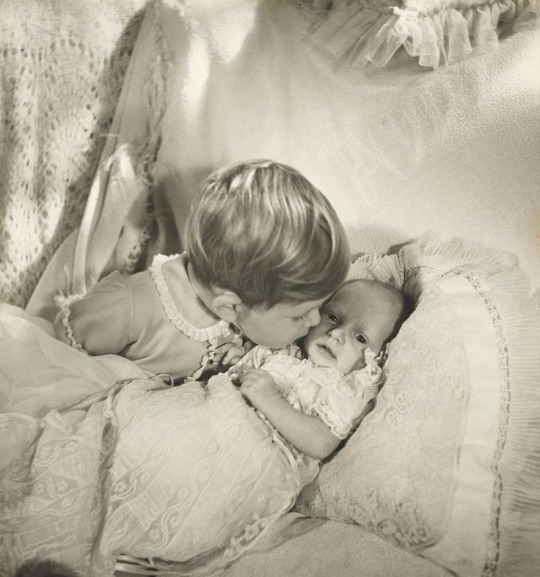
1950 18 month old Prince Charles kissing his newborn baby sister Anne’s cheek, taken by Cecil Beaton, September 1950.
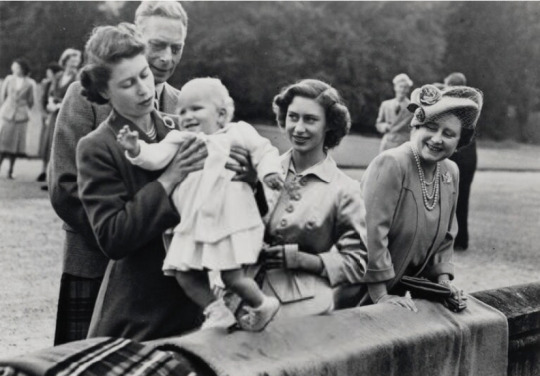
1951 One year old Princess Anne with her mother, Princess Elizabeth, Aunt Princess Margaret, Grandfather King George VI and Grandmother Queen Elizabeth. Taken at Balmoral Castle, August 1951.
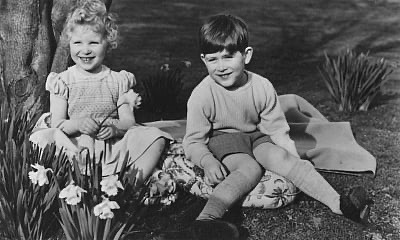
1952 Prince Charles and Princess Anne sat in daffodils in the gardens of Balmoral Castle, 28th September 1952.

1953 Princess Anne and her big brother Prince Charles playing peek-a-boo during the portrait session at their mother, Queen Elizabeth IIs coronation, in the throne room of Buckingham Palace, 2nd June 1953.
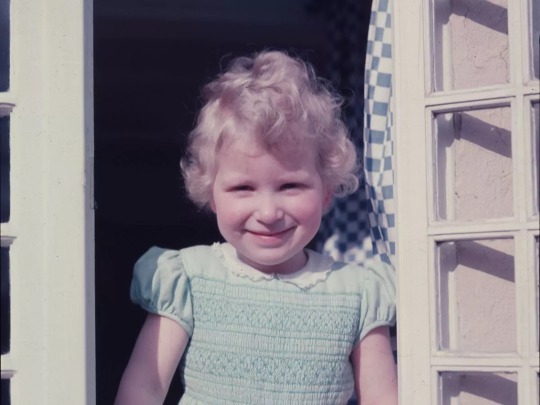
1954 Princess Anne taken through a window of the Little Welsh House at Royal Lodge, Windsor, 18th August 1954.
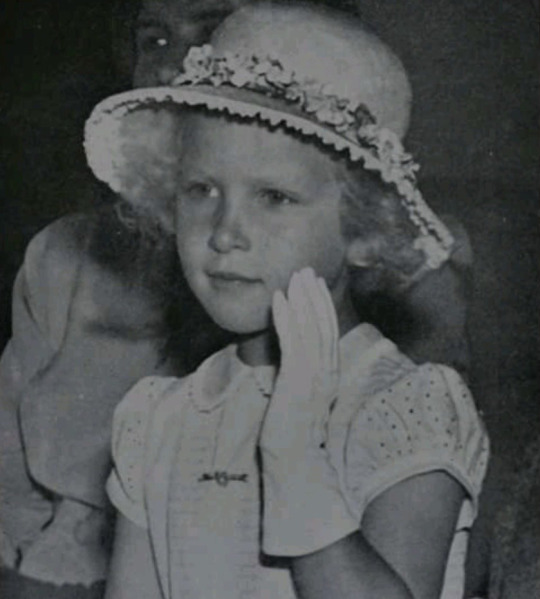
1955 Princess Anne waving to the crowds gathered outside Crathie Church, Balmoral on the eve of her 5th birthday, 14 August 1955.

1956 Princess Anne with her paternal grandmother Princess Alice (Princess Andrew of Greece), aboard the Royal Yacht Britannia, Southampton, 9th August 1956.
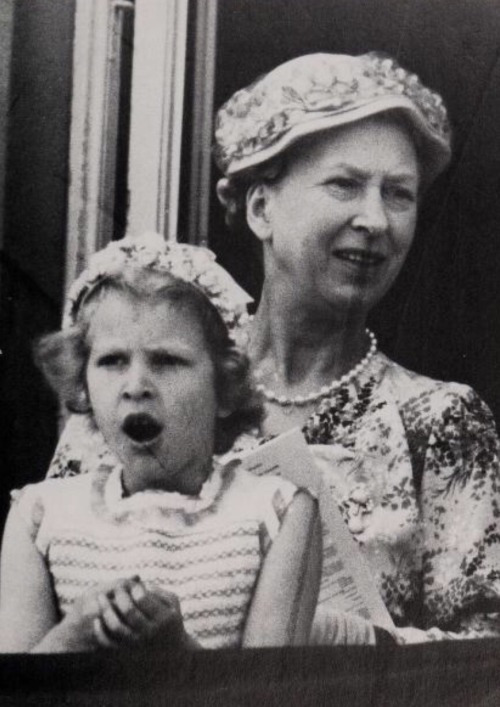
1957 Princess Anne with her great-aunt Mary, Princess Royal, watching the Trooping of the Colour from the balcony of Buckingham Palace on 13th June 1957.
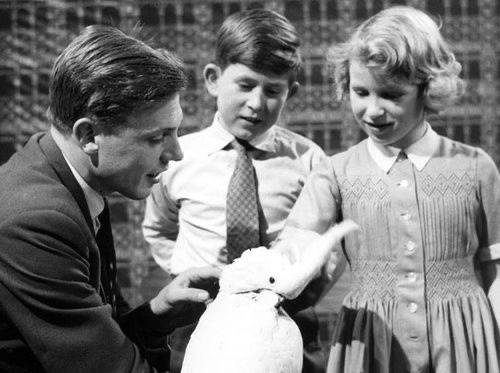
1958 Prince Charles and Princess Anne making friends with David Attenborough's 3 year old cockatoo, Cocky at the BBC television studios at Lime Grove, 29th April 1958.
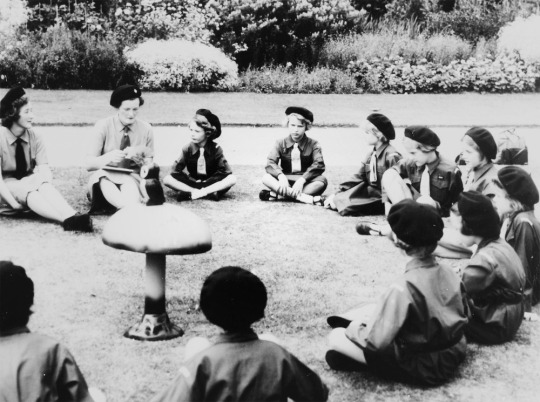
1959 Princess Anne, Brown Owl, Tawny Owl and the rest of the 1st Buckingham Palace brownie pack sitting in a circle with a toadstool and brown owl in the middle in the gardens of Buckingham Palace, 1st December 1959.
#15 days of anne#these photos are so adorable#the cutest little cherub#princess anne#princess royal#fetus anne
92 notes
·
View notes
Text
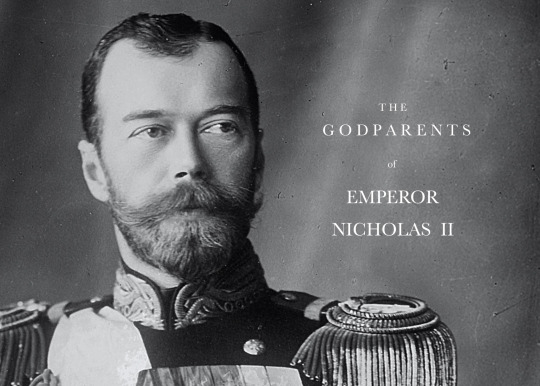


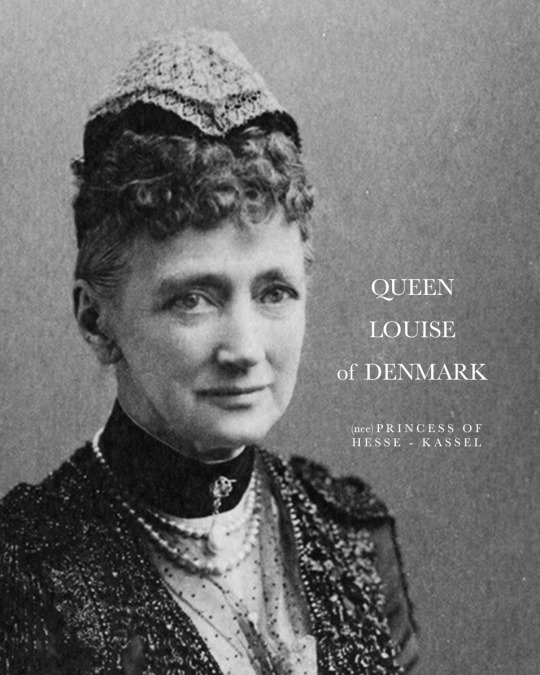

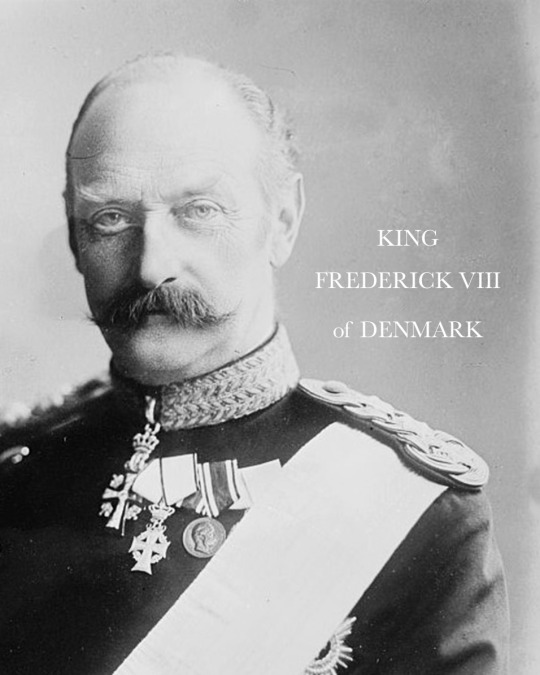
GODPARENTS OF NICHOLAS II
Born during his grandfather's reign on 18 May (New Style) 1868 at the Alexander Palace, Tsarkoe Selo in Saint Petersburg. He was the eldest son of Alexander III and his wife Maria Feodorovna (then, the Tsarevich and Tsarina of Russia). He was christened on 1 June at the Chapel of the Resurrection of the Catherine Palace at Tsarskoe Selo, by the confessor of the imperial family, protopresbyter Vasily Borisovich Bazhanov. His godparents were:
ALEXANDER II, EMPEROR OF RUSSIA - his paternal grandfather, the Russian Emperor stood as one of the godparents. He became the Emperor of All Russia in 1855. Alexander’s most significant reform as emperor was the emancipation of Russia’s serfs in 1861, for which he is known as Alexander the Liberator. He was assassinated in 1881 when the young Nicholas was only 12 years-old, to which he became the heir apparent upon his death.
PRINCESS MARIE OF HESSE AND BY RHINE, EMPRESS MARIA ALEXANDROVNA OF RUSSIA - his paternal grandmother, the consort of Emperor Alexander II, was another of his godparents. Known for her intellect, she was one of the founders of the Russian Red Cross Society. However, she suffered from tuberculosis from 1863 and spent long stays in southern Europe to avoid harsh winters. Although she and her husband were unofficially separated sometime after the death of their eldest son, Maria was treated with respect and love by her surviving family. Maria passed away from illness when the young Nicholas was still a child.
PRINCESS LOUISE OF HESSE-KASSEL, QUEEN CONSORT OF DENMARK - his maternal grandmother was listed as one of his godparents. Louise became the Queen consort of Denmark upon her husband's - King Christian IX - accession in 1863, just few years before her grandson Nicholas' birth. She, herself, was a niece of another King of Denmark (Christian VIII). The great dynastic success of Louise's six children was to a great extent a result of Louise's own ambitions - through them, she was a grandmother of not only the future Tsar of Russia (Nicholas II), but also that of King George V of the United Kingdom; King Constantine I of Greece; King Christian X of Denmark, and King Harken VII of Norway.
GRAND DUCHESS ELENA PAVLOVNA OF RUSSIA - his great-great-aunt, the wife of the late Grand Duke Michael Pavlovich, was one of his godparents. Born as Princess Charlotte of Württemberg, she became a close friend of his grandmother the Empress Maria Alexandrovna, and was known as an intellectual. She was also considered the most exceptional woman in the imperial family since Catherine the Great.
KING FREDERICK VIII OF DENMARK - then, the Crown Prince, his maternal uncle stood as one of his godparents. During the long reign of his father, he was largely excluded from influence and political power. Upon his father's death in 1906, he acceded to the throne at the advanced age of 62. In many ways, Frederick VIII was a liberal monarch who was much more favorable to the new parliamentary system introduced in 1901 than his father had been, being reform-minded and democratically inclined.
Source
85 notes
·
View notes
Text






Royal Deaths, 21st September
1327 - Edward II, King of England, likely assassinated at 43.
1440 - Frederick I van Hohenzollern, Monarch of Brandenburg.
1558 - Charles V, King of Spain and Holy Roman Emperor.
1743 - Sawai Jai Singh II, Kachwaha Rajput ruler of the Kingdom of Amber.
1957 - Haakon VII, King of Norway.
1962 - Princess Marie Bonaparte, Princess George of Greece.
8 notes
·
View notes
Text

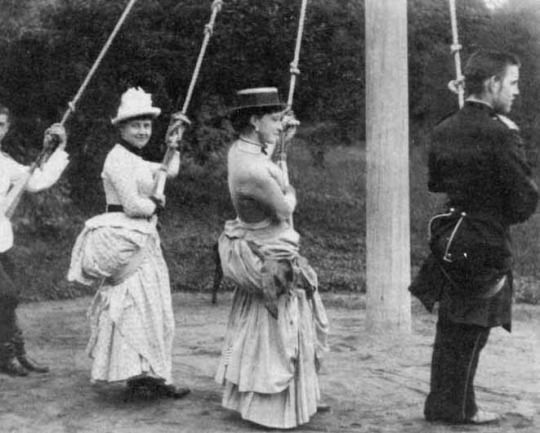
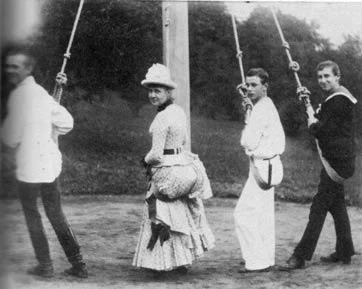
Relatives 1887
Tsesarevich Nicholas, Elizabeth feodorovna, Alexander mikhailovich,Prince Constantine, Nicholas of Greece, Maria Goergovna,Sergei Mikhailovich, George Alexandrovich.
#tsesarevich nicholas#elizabeth feodorovna#george alexandrovich#prince constantine#prince nicholas of greece and denmark#Maria georgovna#Alexander mikhailovich#sergei mikhailovich#1880s#romanovs#nicholas ii#king constantine i#elizabeth of hesse#grand duke george
15 notes
·
View notes
Text








Princess Elizabeth (Queen Elizabeth II), Prince Philip, & Princess Anne pose with the baby’s godparents, Lord Mountbatten, Princess Margarita of Hohenlohe-Langenburg, Andrew Elphinstone, Queen Elizabeth (Queen Mother), and Princess Alice, Countess of Athlone (standing proxy for Princess Andrew of Greece and Denmark), and in other photos pose with Queen Mary, King George VI, Princess Margaret & Prince Charles after the baby’s christening at Buckingham Palace on October 21, 1950
#Princess Anne#Christening#Princess Elizabeth#Prince Philip#Queen Mary#King George VI#Queen Elizabeth#Queen Mother#Queen Elizabeth II#Prince Charles#Princess Margaret#Lord Mountbatten#Buckingham Palace#October 21st 1950#Princess Margarita of Hohenlohe-Langenburg#Andrew Elphinstone#Princess Alice#Countess of Athlone#The Royal Family#The British Royal Family#British Royal Family#1950s
8 notes
·
View notes